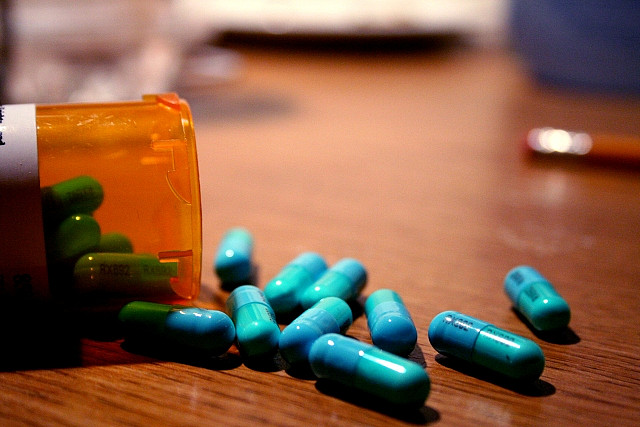Prescription Price Hikes: The Discussion Continues

The high cost of prescription medications has been a hot topic as of late. The discussion came to a head last month when a pharmaceutical company raised the price of a 62-year-old pill about 5,000 percent overnight.
As the news broke, Turing Pharmaceuticals CEO Martin Shkreli unapologetically took to the airwaves and social media touting the reasoning behind the dramatic price hike, claiming his company needs the money to invest in future research and development, and quite frankly, that he is in the business to make a profit. After being skewered for his comments, Shkreli backtracked and said he would rescind the hike, although he did not disclose by how much.
Sadly, the Turing case is not an isolated incident. Price hikes for specialty, brand, and generic prescription drugs have been happening for years. Over the last 12 months, the cost of one in 12 generic drugs has doubled, with some price increases exceeding 1,000 percent. For example, the popular asthma medication, albuterol sulfate, jumped from $11 to $434 per inhaler, a 4,000 percent price increase.
As new “blockbuster” medications come to the market, pharmaceutical companies are setting outrageously high prices with no concrete breakdown of why they are charging so much. That’s because there are no regulations when it comes to price-setting standards. In 2014, for example, U.S. spending on prescription drugs totaled nearly $379 billion – a third of which was spent on specialty pharmaceuticals. This translates into a lot of your money going directly into the pockets of Big Pharma.
If you follow this blog, you know that the cost of drugs is something I have been talking about for the better part of a year. Unfortunately, these high costs are having a major impact on patients, employers, and the health care industry as a whole. As I have said before, if left unchecked, these costs will bankrupt our system.
Ride the wave
While I shared in the outrage of those reacting to the Turing story, I did see something positive come out of it – public knowledge. One story about one pill is giving folks around the country a peek behind the pharmaceutical industry’s “Wizard of Oz”-like curtain. And they don’t like what the wizard is doing.
A recent Kaiser Health Tracking Poll found that 72 percent of Americans believe drug costs are unreasonable, and 74 percent feel that drug companies put profits before people. This is why we need to ride the wave of awareness and take action. Pressing for price transparency and cost controls has to be a priority.
Six states, including New York, have introduced legislation in support of drug price transparency. New York State Sen. Ruben Diaz (D-Bronx) introduced Senate Bill 5338, the Pharmaceutical Cost Transparency Act of 2015. Assemblyman Michael Blake (D-Bronx) introduced similar legislation with Assembly Bill 8265. If approved, the laws would require pharmaceutical companies to open their books and disclose exactly how much money is being spent on things like marketing, lobbying, and research. So far, however, none of the legislation has moved.
We are inching slowly toward more transparency, but so much more needs to be done. Take a look at the Centers for Medicare & Medicaid Services Open Payments Data website, and you will be amazed at how much the pharmaceutical industry is doling out to physicians and hospitals.
In 2014, Gilead Sciences Inc. (makers of the $1,000-per-pill treatment for hepatitis C) paid ONE physician in Alabama $512,420.89 for food, travel, and “consulting fees.” In total, the company made $31.4 million in general payments to physicians and hospitals last year. What did they gain from spending this money? Who knows? There is no explanation as to the benefits of these expenditures.
Act now
Let me be clear – we are not asking the pharmaceutical industry to stop searching for a cure. Innovation is a wonderful thing, and scientists should develop treatments that can potentially eradicate previously incurable diseases. But these medical marvels cannot come at a cost that only a few can afford.
Yes, development of a new drug can be costly, but it should not involve raising the price of older medications to pay for it. This is not only putting lives in danger, it is placing unnecessary weight on a system that is about to buckle under the pressure.
Insurance companies and hospitals are required to follow stringent regulations when it comes to cost. For example, a health plan in New York must get the state’s approval when setting premiums and is required to spend a minimum of 85 cents of every dollar on medical costs.
If you are going to the hospital for surgery, you can now research the cost of some common medical procedures, such as knee replacements, before you even schedule the appointment. The public deserves access to the same information when it comes to the cost of medicines they need to stay healthy.
Don’t let this opportunity pass by. I implore you to take action and make your voice heard. Encourage your state and federal representatives to call on the pharmaceutical industry to open their books and to be held accountable for their actions.
At CDPHP, we believe that high-quality, affordable health care should be accessible to all. Remember, there is no good reason why a pill, which has been affordable and effective for more than six decades, should suddenly be out of reach for millions because one man says so.
 The Daily Dose
The Daily Dose
Comments are closed.